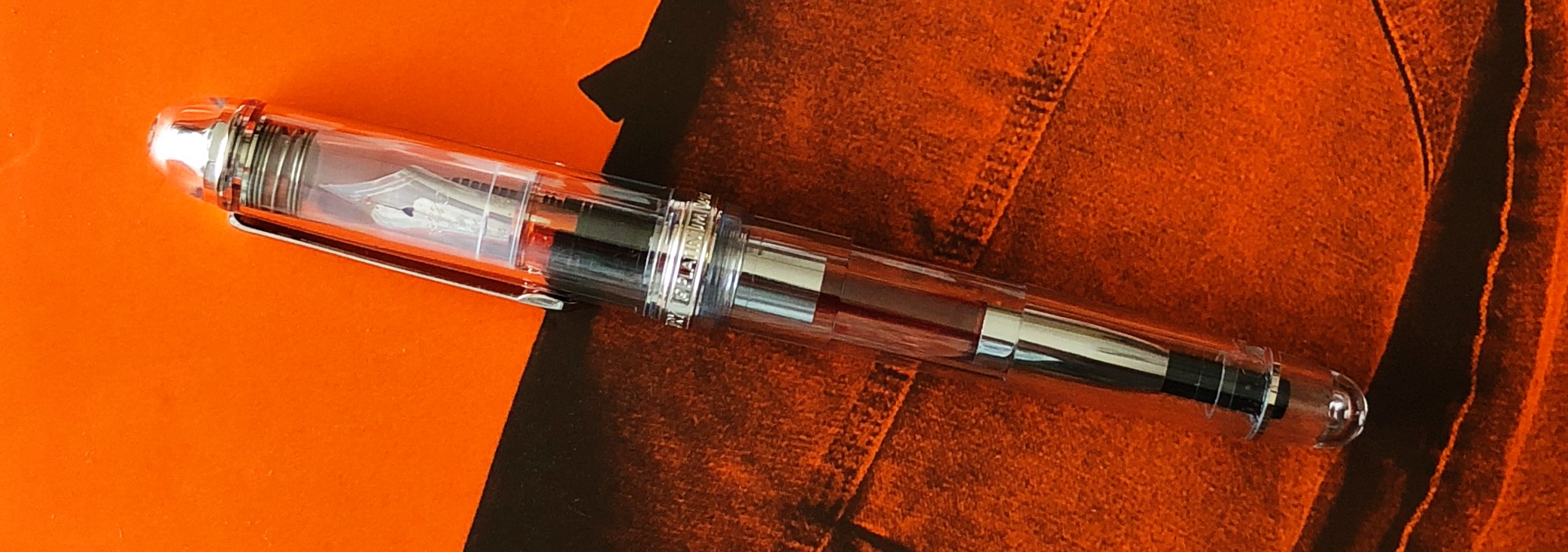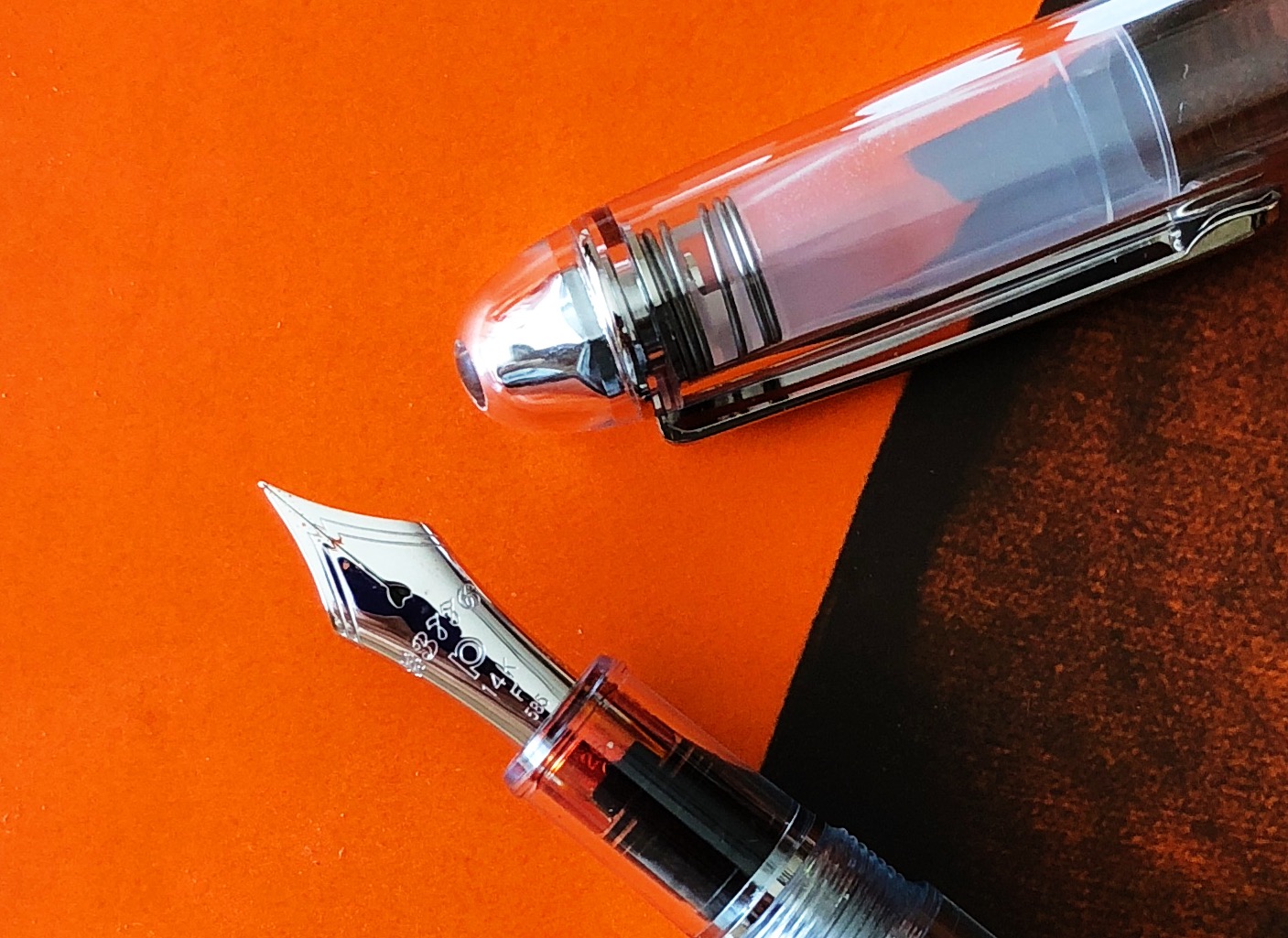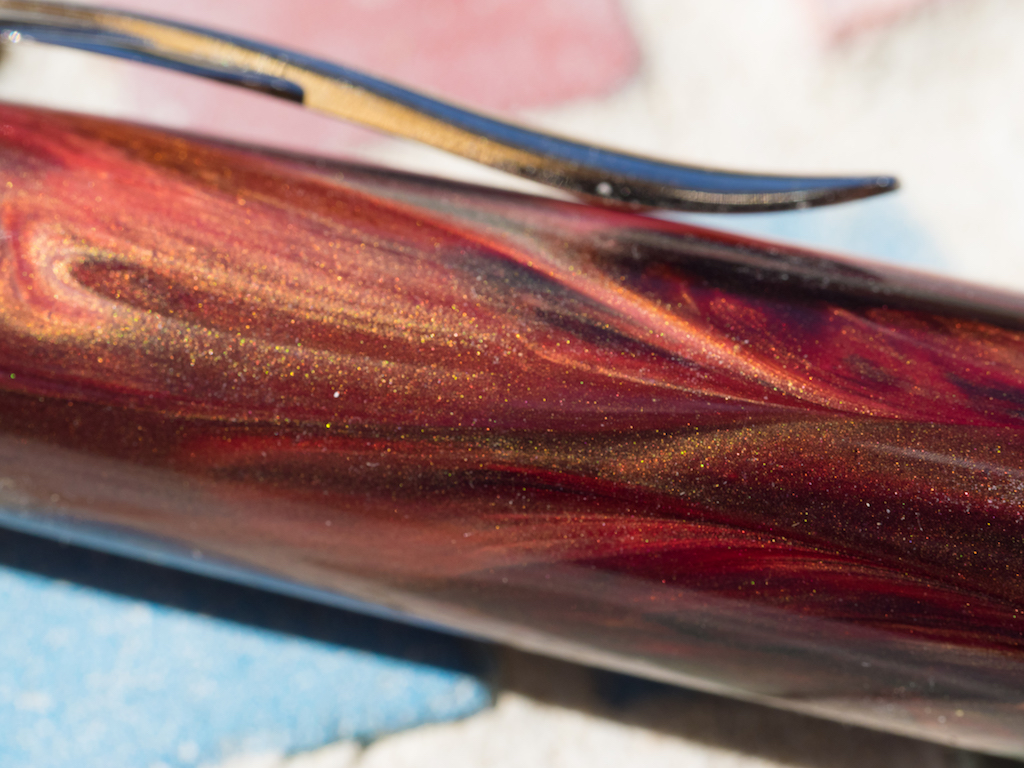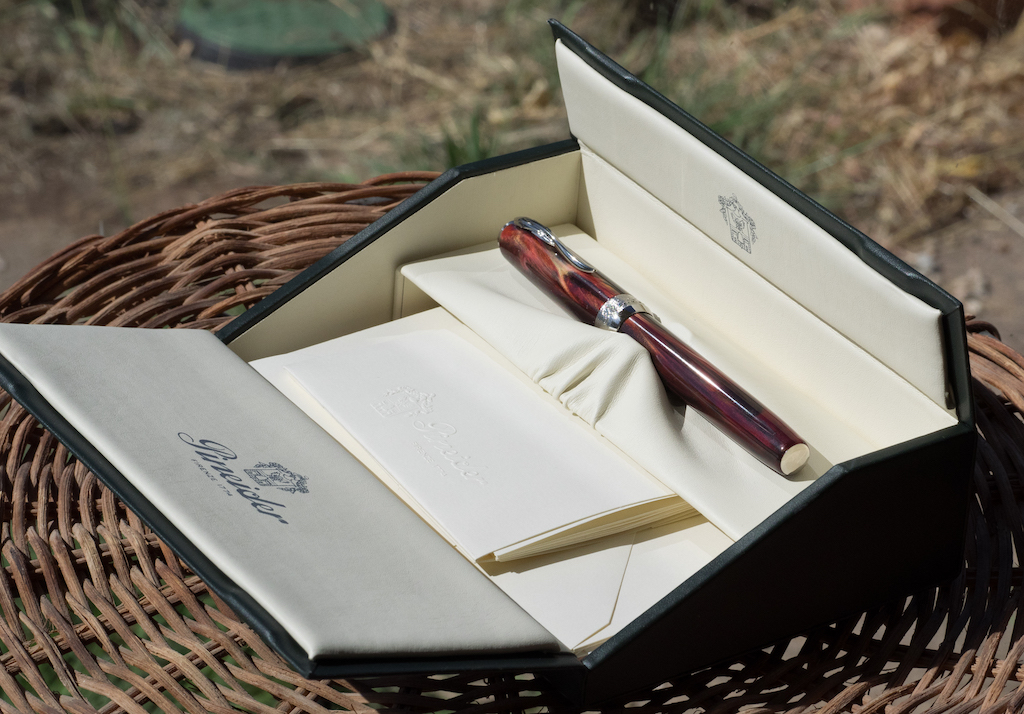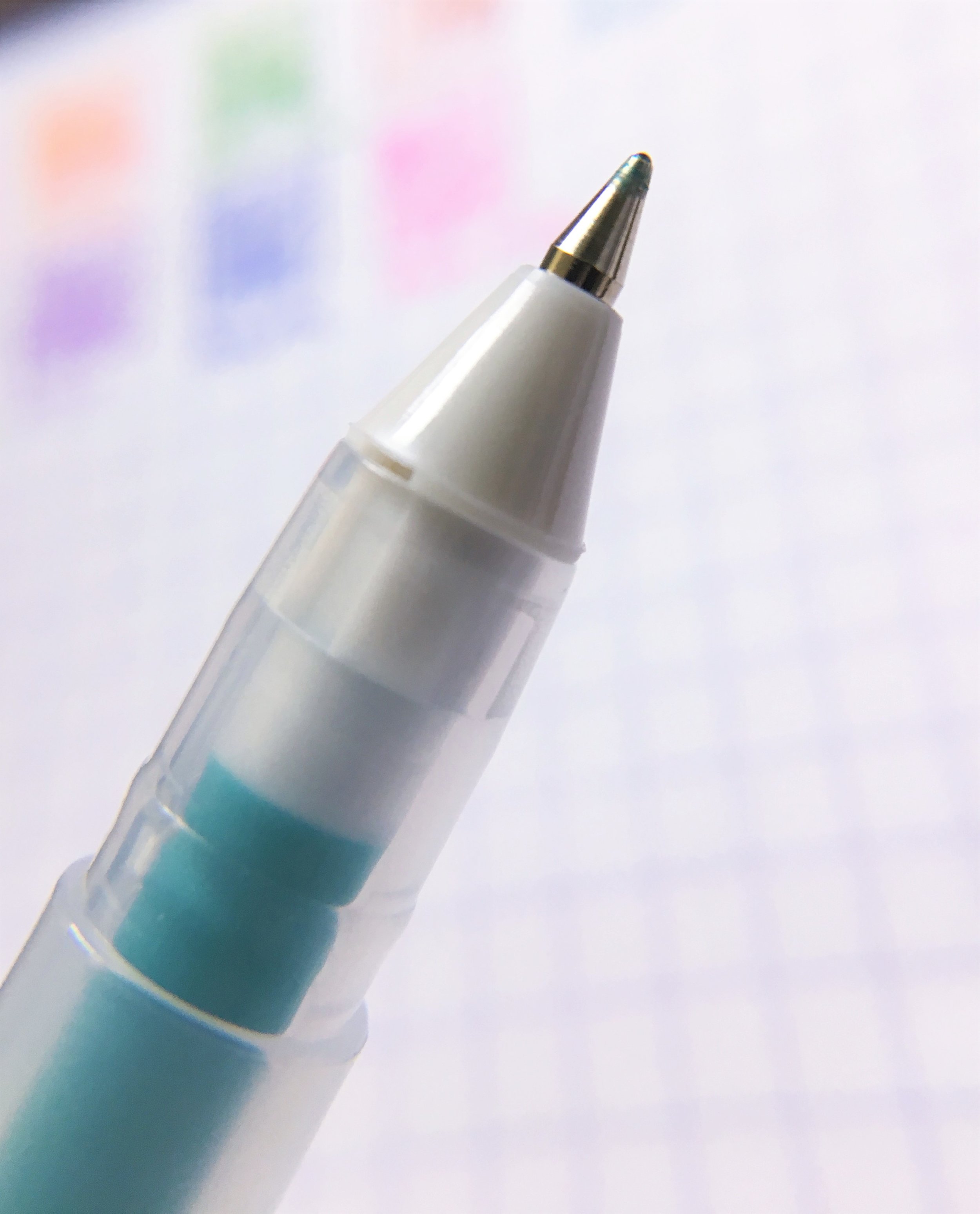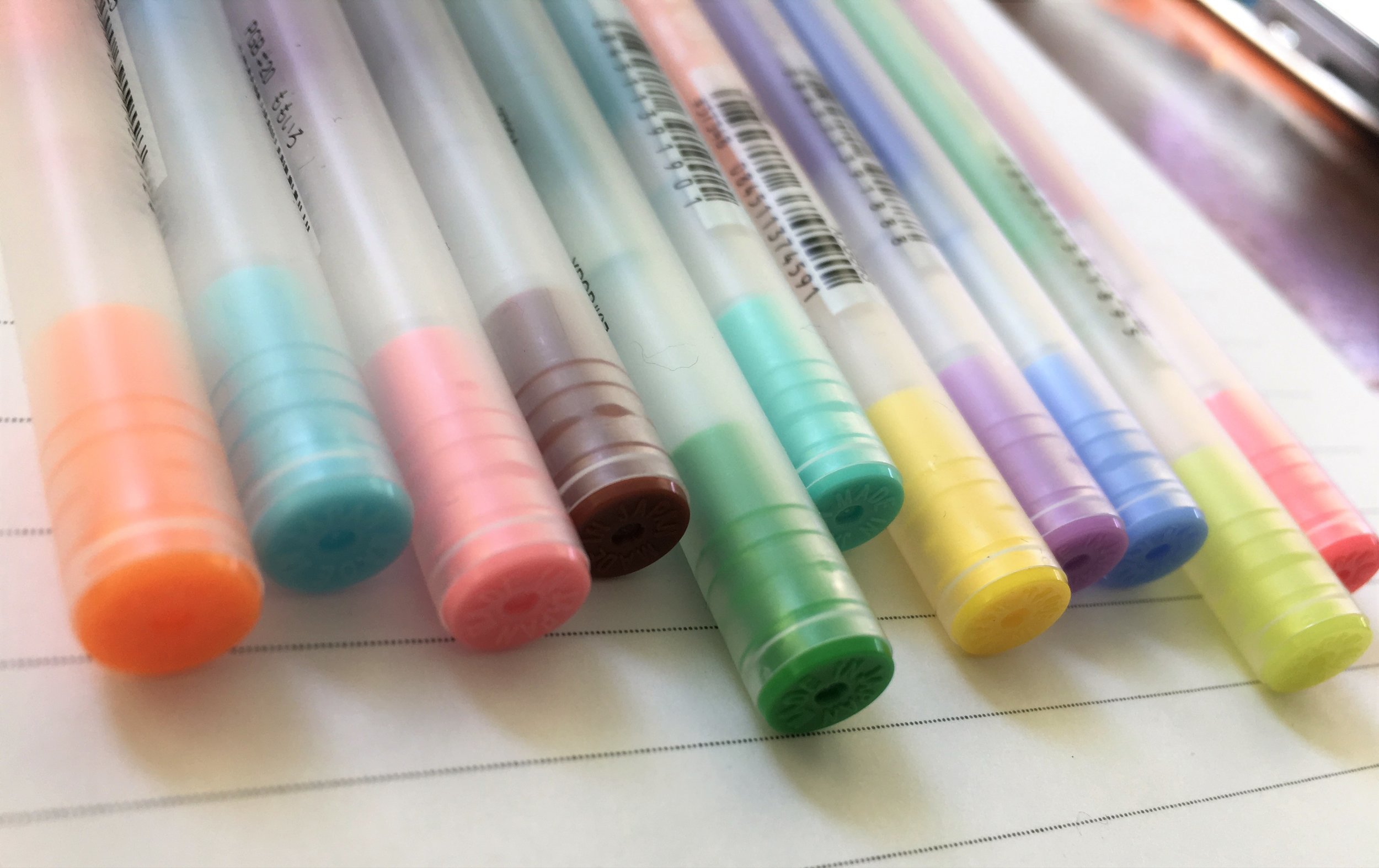One of the challenges with reviewing products is keeping it fresh. I never run out of things to review, but at the same time, I often review products that are nearly identical aside from aesthetics.
The Platinum 3776 lineup is the epitome of this.
The Platinum 3776 Oshino great pen from a great brand. A brand I love, and a brand I have praised on these pages and in other forms repeatedly. Heck, I even named Platinum the 2017 brand of the year in the Pen Addict members newsletter. But we are at the point now where I am reviewing barrel colors. Luckily, their barrel colors are very cool.
Let’s get the core features out of the way. Platinum has two primary things that separate them from the competition: The nib, and the slip & seal cap mechanism.
Taking the second one first, this is a fantastic addition to any fountain pen. In the clear-barrel Oshino, you can see the mechanism in action, with an extended cap liner and spring giving the pen a tight seal when stored away. The enemy of fountain pen nibs is air, which can cause the nib to dry out and the ink to not flow without priming. Not in the 3776 lineup. The slip & seal gives the cap complete airtightness. I’ve left a 3776 inked for months without use, and upon uncapping and writing, it was like I had inked it for the first time.
As flawless as the cap seal is, the nib is even better. For my money, it is the best of the big three (Pilot, Platinum, Sailor) in this price point. I prefer both Sailor and Pilot from a design and variety standpoint, but Platinum makes a better nib. No matter the size, they are perfect out of the box every time in my experience. And, they offer a good mix of sizes for many models, such as Ultra Extra Fine, Soft Medium, and Music. Not all models have all options, but Platinum seems to be expanding their offerings.
The one con that comes up when mentioning the 3776 it is that it is lightweight. At approximately 20 grams, it is in the weight range of the Pilot 74 and Sailor Pro Gear Slim - the entry level gold nib pens for those respective brands - while being priced like next tier options, like the Pilot 912 and Sailor Pro Gear Standard. I do find the 3776 to be light, but not flimsy. It is a sturdy pen and I’ve never considered it to be fragile.
I recommend the 3776 constantly, and often over the competition depending on the context of the question. That said, is it wrong for me to want more from the brand on a personal level? Where are the updated stock colors? How about some solid, non-translucent offerings? Or maybe some alternate cap, section, or finial materials? I see a big opportunity for me to give Platinum more of my money, but they seem content with where they are at.
And who am I to argue? They are great pens.
(Goldspot Pens provided this product at no charge to The Pen Addict for review purposes.)
Enjoy reading The Pen Addict? Then consider becoming a member to receive additional weekly content, giveaways, and discounts in The Pen Addict shop. Plus, you support me and the site directly, for which I am very grateful.
Membership starts at just $5/month, with a discounted annual option available. To find out more about membership click here and join us!

